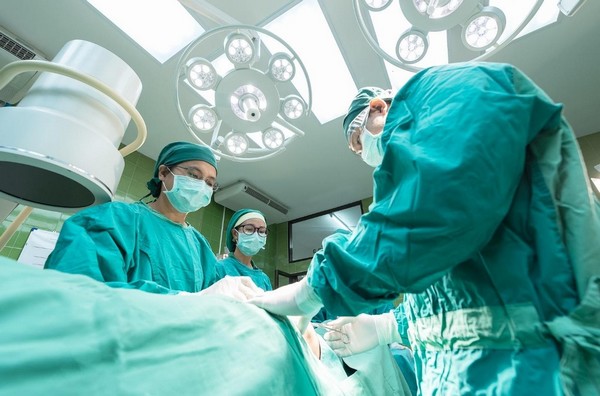Hypospadias is a condition in which the urethral opening is dislocated from the head of the penis. It is mostly situated at the underside near the scrotum.

The types of hypospadias include:
- Distal or glanular: the opening is near the head of the penis (most common form)
- Midshaft: the opening is in the middle to the lower shaft of the penis
- Penoscrotal: the opening is where the penis and scrotum meet
- Perineal: the opening is behind the scrotal sac (most severe form and the least common)
Hypospadias can be corrected with the help of surgery. Hypospadias repair surgery is a surgical procedure that is performed when the child is between 6 and 18 months of age.
Post-operative care plays a critical role when it comes to recovery following hypospadias. In this blog, we have outlined general instructions regarding post-operative care for quick recovery after the surgery.
- Diet
Children can be fed 2 to 3 hours after the surgery if the procedure is performed under sedation and caudal epidural anesthesia.
Complex cases of hypospadias may require the operation to be performed under general anesthesia. In such cases, the patient is kept on an empty stomach for 3 to 4 hours after the surgery.
- Catheter Care
In a hypospadias surgery, a urinary pipe called a catheter is tied to the penis with a small stitch. The pipe goes into the bladder and drains urine constantly. The catheter is removed 1 to 2 weeks after the procedure.
If the urine leaks or spurts from the tube, it might be an indication of a blockage in the pipe. Consult the child’s doctor if you suspect a blockage.
The catheter may cause bladder spasms. While spasms do not hurt, they can be a source of discomfort. A few drops of blood in the diaper are normal. If there is evidence of more bleeding than expected, immediately consult the child’s surgeon.
Refrain from putting any ointments or powder on the genital region. If the child accidentally soils the surgical site and dressing due to loose bowels, clean the site with soap water and a washcloth.
- Dressing Care
The catheter and surgical site are secured with the help of a dressing. The dressing typically consists of clear plastic over gauze, or plain gauze taped around the penis. The dressing protects the incision and helps it heal.
Two days after the surgery, dressing is removed. Mild swelling and discoloration are normal observations after the dressing is removed, as is mild bleeding.
- Diaper Care
After the surgery, the child is kept in double diapers until the catheter is removed, as they provide added protection and cushioning.
A hole is made on the inner diaper’s front side, and the catheter is allowed to drain on the outer diaper. The inner diaper is only changed after the child passes stool. The outside diaper is changed when it is full of urine.
It is challenging for children over five years of age to work with a diaper; therefore, the best option is a urine bag for urine drainage.
- Medications
Tylenol (acetaminophen) is the most commonly prescribed medication for children under six months. Patients over the age of 6 months may be given Tylenol in combination with codeine. Pain medication is ideally administered after meals.
An anticholinergic called Ditropan (oxybutynin) is also prescribed to prevent bladder spasms. Stop administering Ditropan the night before the appointment to have the tube removed.
Read: Everything You Need to Know About Gynecomastia Surgery
A broad-spectrum antibiotic such as cephalexin is also prescribed to prevent the occurrence of infections. The antibiotic is often given in combination with an antacid, such as Lansoprazole.
- Activity
It is best to encourage quiet play. Parents should ensure that their child does not cycle, swim, or engage in any contact sports or straddling toys. Strenuous activities must be avoided for approximately three weeks.
- Bathing
The child should stay out of the bathtub or shower for at least two days following surgery. Sponge bathing is fine as long as the wound is kept dry. The child can be given a short warm tub bath after the dressing has been removed.
Parents are advised to refrain from drying the surgical site with a fiber cloth as it can stick to the wound. Do not scrub the area or directly wash the penis.
- Follow-up Visits
Schedule an appointment with the doctor a week after the procedure to assess the wound and remove the dressing. A second visit should be scheduled after 7 to 10 days to remove the catheter.
After the catheter is removed, urinary spraying may be observed. It is a normal occurrence. However, if you notice the urinary stream thinning, consult the surgeon immediately.
Read: Liposuction Surgery: Reduce Your Bulging Belly Fat Instantly | Body Contouring
A final follow-up checkup should be arranged almost four weeks after the catheter is removed to assess healing.
- Final thoughts
Hypospadias surgery is a routine procedure. Patients with simple primary hypospadias are discharged on the same day as the procedure. Complex cases may require the patient to stay in the hospital for two days after the surgery.
Good post-operative care is essential to ensure quick and proper healing and recovery. If you need more information regarding hypospadias or post-operative care, consult your urologist.
